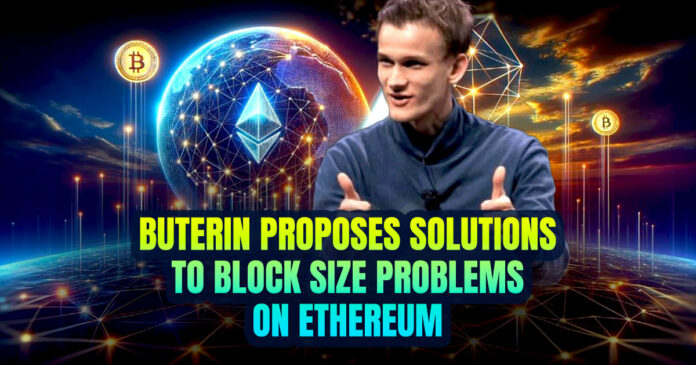Vitalik Buterin has proposed new ways to reduce Ethereum’s maximum block size.
This is part of an overall plan of Ethereum to optimize the blockchain for the “rollup-centric roadmap.”
Buterin’s Strategy for Block Size Dilemmas
This refers to using rollups to scale and enhance Ethereum’s efficiency and scalability. In a new blog post released on February 5th, Buterin and Wahrstätter stress optimizing blockchain space usage. Both parties noted that block size has doubled over the last 12 months.
Did you know Vitalik and Toni posted an article yesterday with their thoughts on reducing #Ethereum block size?
They discuss different ways to scale Ethereum's efficiency, by increasing the block gas limit and nonzero calldata bytes cost to minimize and stabilize block sizes. pic.twitter.com/8MpsAmZCxY
— Omniscia (@Omniscia_sec) February 6, 2024
Theyr credit the increase to the growing popularity of rollups and trends like inscriptions, which call for increased data availability on Ethereum. Their blog post proposed at least five different, varyingly complex strategies to address this problem. These include altering the use of calldata and block gas limits to possibly decrease the maximum block size.
The writers explained that “by increasing the block gas limit and the price for nonzero calldata bytes, a smaller and less variable block size can be achieved, making space to add more blobs in the future.” The term “Ethereum gas limit” is an important network parameter in Ethereum. It refers to the maximum amount of gas used on transactions or smart contracts in each block. It helps to ensure the stability of network performance.
Furthermore, Calldata plays an important role in executing smart contract functions. It helps determine how much data a block can carry. Calldata increases the load on the network. So Buterin and Wahrstätter are exploring ways to increase the gas limit and maintain effective security on the network.
On Increasing the Block Gas Limit
By:
– Toni
– VitalikELI5
Special thanks to the Starkware team for feedback and data!Important Takeaways:
## ELI5
The article discusses a proposal to manage Ethereum's block size more efficiently by adjusting the gas limit and the cost of…— ethresearchbot (@ethresearchbot) February 5, 2024
A Look at the Proposals
For their first proposal, the writers recommend increasing the calldata cost from 16 to 42 gas. This, they predict, would result in a huge reduction in the maximum block size from 1.78 megabytes to 0.68 megabytes, creating space to increase the block gas limit.
However, Buterin believes that this measure would have a detrimental effect on apps like StarkNet that need substantial calldata for on-chain proofs, as it would discourage the use of calldata for data availability.
Buterin and Wahrstätter’s second proposal involves increasing calldata costs and bringing down other opcode costs. Their third proposal involves capping calldata per block. Like the first solution, this move would also affect apps that rely on using calldata for data availability.
Source: ethresear.ch
Another solution offered by the pair involves setting up a separate calldata fee market to possibly increase gas limits. This proposal would allow the price of calldata to adjust based on demand. However, the problem with this proposal lies in the complexity of implementation and analysis.
Conclusion
For their final solution, Buterin and Wahrstätter discussed providing what they termed an “EVM loyalty bonus” as a compensation package for call data-reliant apps.
Both writers concluded that each proposal held some form of complexity. So, they concluded that “a balanced solution could be to increase the cost of calldata while reducing the cost of some operations, or perhaps moving towards a model that offers incentives for using calldata inside the EVM.” These proposals come weeks after Buterin suggested increasing Ethereum’s gas limit by 33% to boost network throughput.
Disclaimer
The information discussed by Altcoin Buzz is not financial advice. This is for educational, entertainment, and informational purposes only. Any information or strategies are thoughts and opinions relevant to the accepted levels of risk tolerance of the writer/reviewers and their risk tolerance may be different than yours. We are not responsible for any losses you may incur due to any investments directly or indirectly related to the information provided. Bitcoin and other cryptocurrencies are high-risk investments so please do your due diligence. Copyright Altcoin Buzz Pte Ltd.






























